Gently billowing in a light breeze, a Wikwemikong First Nation flag rises and falls as if dancing with the growing wind. Busying themselves in front of the Little Current marina on Manitoulin Island in northern Ontario, some 150 canoe racers check their gear, preparing for a race to the community of Killarney, 34 kilometers distant. Killarney was once referred to as Shabahonaning by Indigenous peoples, and then later French fur traders and voyageurs. It means safe passage for canoes. But today Georgian Bay is anything but hospitable.
From the northwest, a steady wind grows and everyone casts nervous glances in the chilly, mid-summer blow’s direction. If this were any other canoe race on any other day, the word would have already spread, race canceled, but not today. The inaugural Current To Killarney Race is something different. Instead of tandem teams racing in sprint-style canoes, the race will be conducted predominately in 30-foot North canoes, commonly called voyageur canoes. Despite the building weather, the show will go on.
![Modern day voyageur Mike Ranta [right] helped paddle the first batch of Killarney Cream Ale by Manitoulin Brewing Company from Little Current to the small community of Killarney, on Georgian Bay. This delivery inspired the Current To Killarney race. | Photo: David Jackson](https://paddlingmagazine-images.s3.amazonaws.com/2020/06/08155804/Hero_pg62_Current-to-Killarney2.jpg)
Blair Hagman, co-founder of the Manitoulin Brewing Company (MBC) in Little Current, was serving up cold ones at the Killarney Music Festival in August 2018 when he caught sight of cross-Canada paddler Mike Ranta and his signature birchbark hat. The two got to chatting and dreamed up the idea of delivering the first batch of MBC’s soon-to-be-released Killarney Cream Ale to its namesake town. But they’d do it by paddle.
Two months later, in the chilly fall air, Hagman and a team of seven including the jovial Ranta along with his trusted canine, Spitzii, set off from Little Current in a 30-foot-long voyageur canoe with the beer stowed on board. They endured three-foot waves, rain, wind and even snow to cross the rough waters of Lake Huron. Fighting cold hands, rough seas and soggy butts, the team arrived almost a full day’s paddle later in Killarney, sporting smiles and sharing high fives as a token basket of Cream Ale was carried into the Killarney Mountain Lodge resort. It was later at the lodge, sitting fireside and enjoying a sip of this new brew, a race was born.
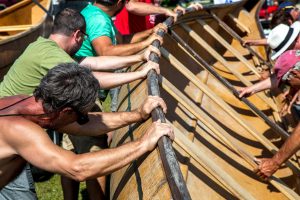
Less than one year later, on July 6, 2019, paddlers descend on Little Current. A provincial police powerboat circles out front of the marina, deep hulled safety boats ready their kit, and Mike Ranta arrives, albeit a little late, with a coffee in hand and a smile on his face.
“A little choppy!” he announces while sipping his coffee and looking out over the rough passage. Racers are anxious to hear from brewer-turned-race-organizer Hagman. When he huddles the 150 racers together, it’s a calming word and steady voice paddlers receive—the race will go on, but in a slightly altered course to play to the wind’s strength. Everyone is relieved.
Racers huddle in close to Hagman to hear how they’ll start at Spider Bay Marina, paddle under the iconic Swing Bridge, head toward Strawberry Island Lighthouse then Heywood Island, and push south towards Landsdowne Channel leading to the quaint village of Killarney. As the address concludes, everyone hurries to a small beach in the lee of the wind and begins helping move a dozen voyageur canoes off the spit of sand where they are staged. In a race where there is no cash prize, no live updates, just good old-fashioned friendly competition and cold beers at the end, people are bursting with energy.
By the time the race is underway, the channel departing Little Current is a sight to behold. Voyageur canoes travel under the swing bridge, each with seven to 12 paddlers, while a few tandem canoes bob in between, and one lone sea kayaker paddles alongside. Cheers are heard and smiles seen in every hull. There isn’t the typical call to hut from the stern paddlers or the aggravated grunts of hard physical work common amongst marathon racers, though certainly everyone is pushing themselves as they paddle headlong into the building waters.
Safety boats circle and keep a watchful eye on every team, and it isn’t long before a few saves are in order. With a three-foot chop and quartering wind, some teams are blown off course, veering away from the safe passage and instead heading straight for the wrath of Lake Huron beyond protective islands. A few teams are plucked from their canoes and ferried back to the start, but the race continues.
Some teams bail water from rogue waves, others chant and sing to the rhythm of their strokes, others just laugh at the adventure. Ranta can hardly wipe the smile from his face as he steers his team’s boat along. Initially, he had planned to paddle his own solo canoe but opted to join a team at the sight of the conditions. For the man who crossed Canada twice alone by canoe, this is a walk in the park, but this time with friends.
By the time everyone reaches the sheltered inlet leading into Killarney, they are protected from the blow. It is a sprint in the final hours to reach the town’s finish line. Racers battle tired arms and sore backs, their muscles weary from constant exertion in the stiff winds. As teams near the finish line, cheers from supporters and fellow racers greet them. There is no podium to look forward to, only bragging rights and shared experience to build bonds lasting a lifetime.
In a world where faster and lighter dominate the playing field and rule the competition scene, here was a race pushing back against the norms. People wanted to brave the big lake to celebrate a piece of history the nation was founded on. Canoes are the oldest form of travel in the northern wilds, and long before voyageurs busted their way from coast to coast in search of furs, there were moccasin trails that connected these very same waterways. The seas might have been challenging, but this group wasn’t the first to challenge them. Their muscles might have ached, but these aches are a time-honored tradition. For half of a cold summer’s day, every racer was a voyageur seeking Shabahonaning, and at race’s end, everyone laughed at their toils.
A canoe filled with Manitoulin Brewing Company beer awaits the weary racers, a dinner completes the evening, and hand-crafted wood canoe paddles are awarded to the winners.
Despite its humble beginnings as an unconventional beer run, the Current To Killarney race has blossomed into a three-day festival to celebrate canoe culture in one of Canada’s best paddling destinations. Bringing people together for the love of water and canoes along a route steeped in history is an exciting addition to the Canadian paddling race scene. Though for 2020, glassy conditions and hot sun would be a welcomed reward.
David Jackson is a photojournalist living in Thunder Bay, Ontario. The next Current to Killarney race is scheduled for July 2, 2022.
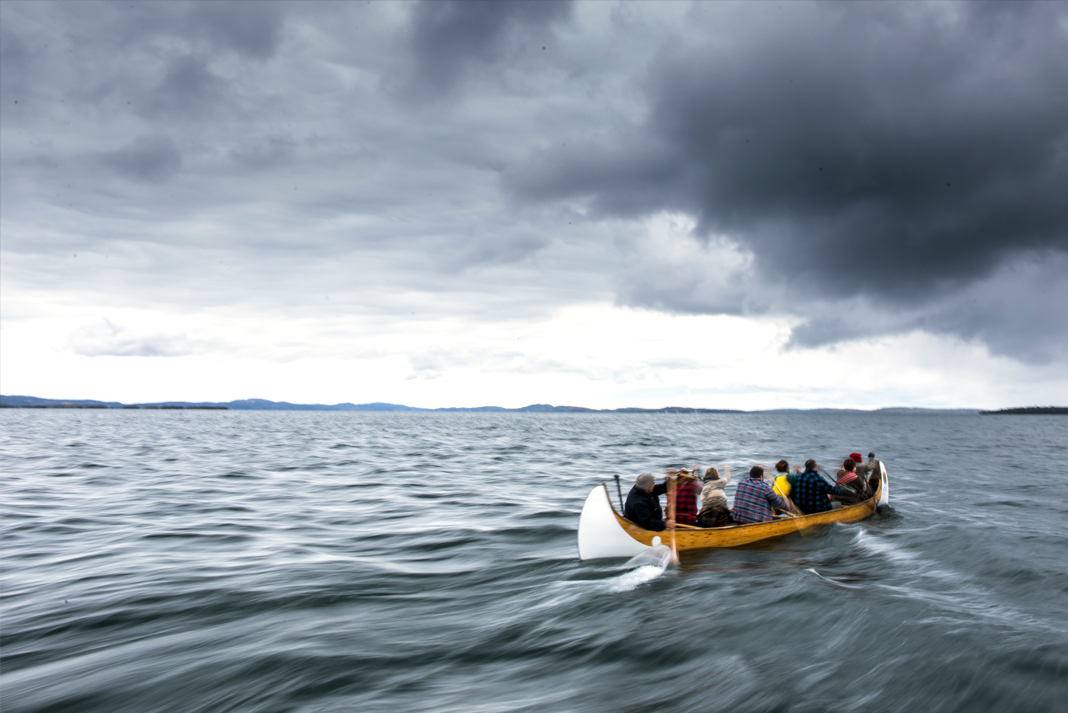
Many hands make light work and many strokes make fast travel. On the original Manitoulin Brewing Company beer run from Little Current to Killarney, pictured here, the paddlers donned their Algonquin dinner jackets over PFDs in the chilly weather. | Photo: David Jackson



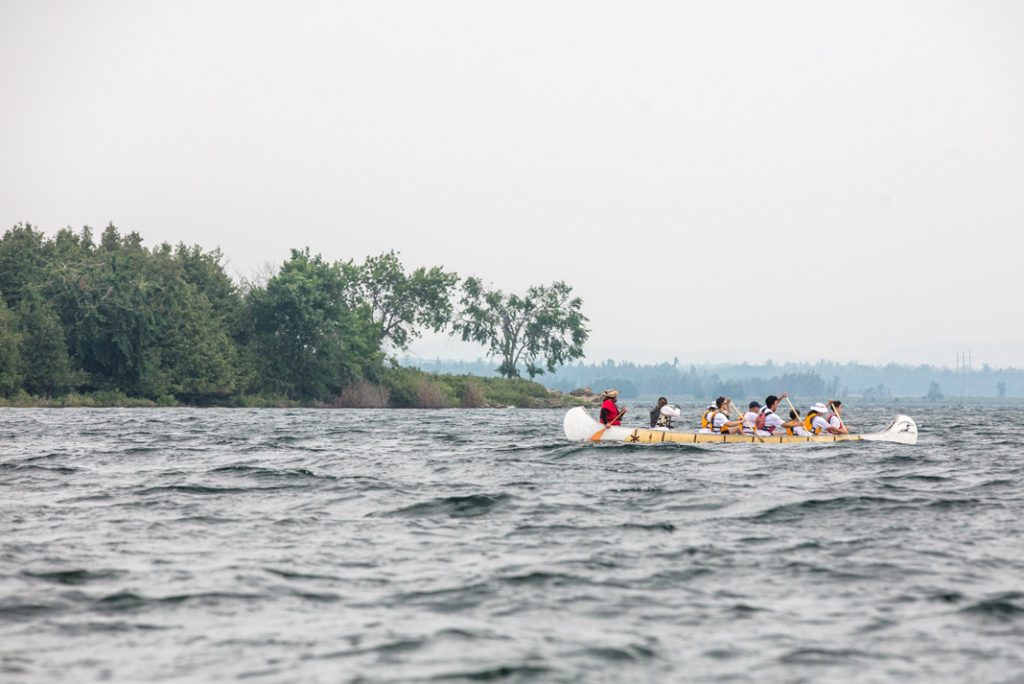
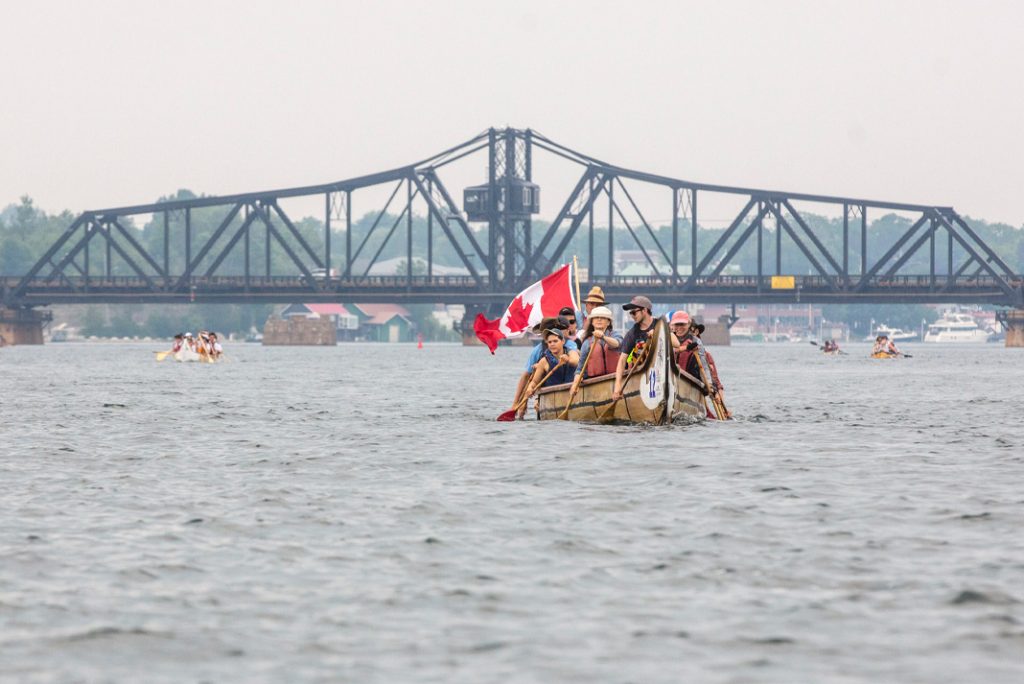
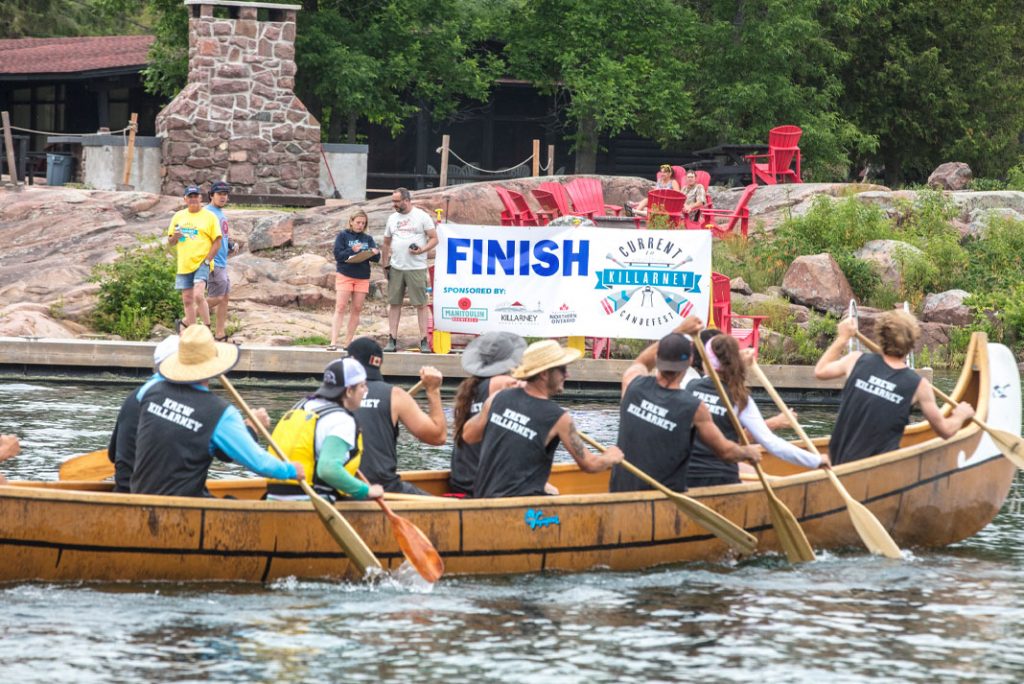
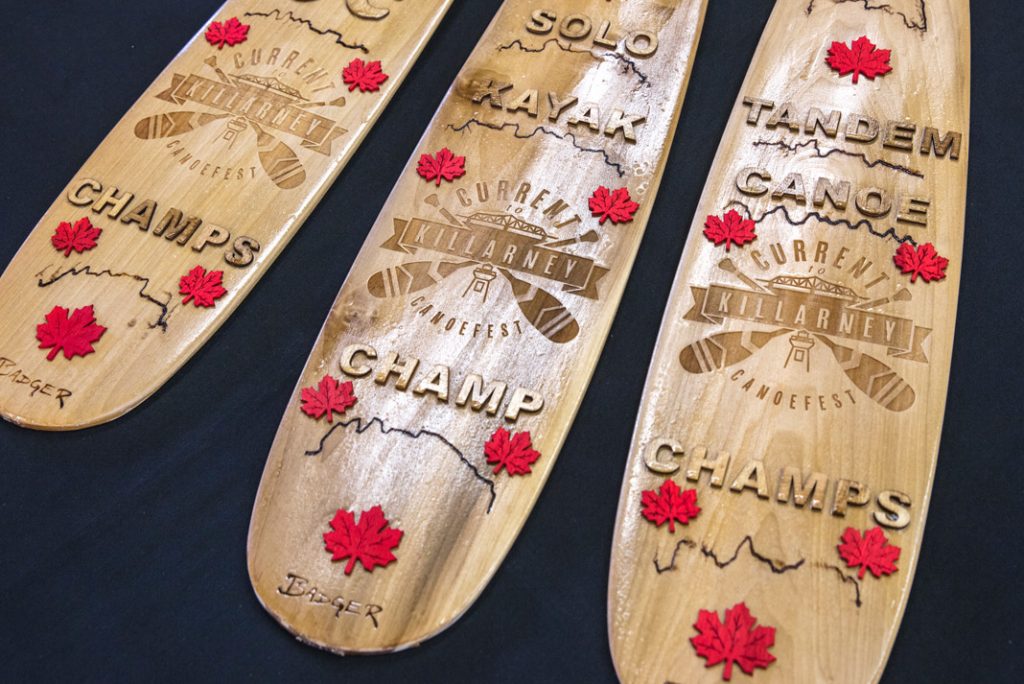
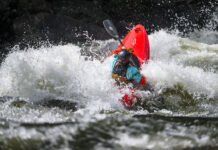
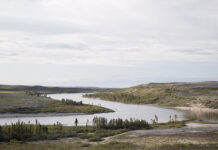
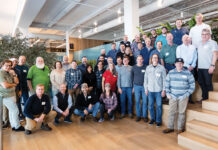
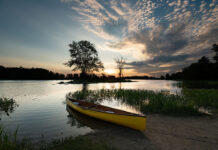
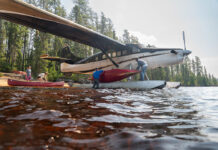

Canoe Regatta Goose Bay Labrador on Gosling Lake ! Big Party – Good Time ! Lot`s of fun for every family and friends !